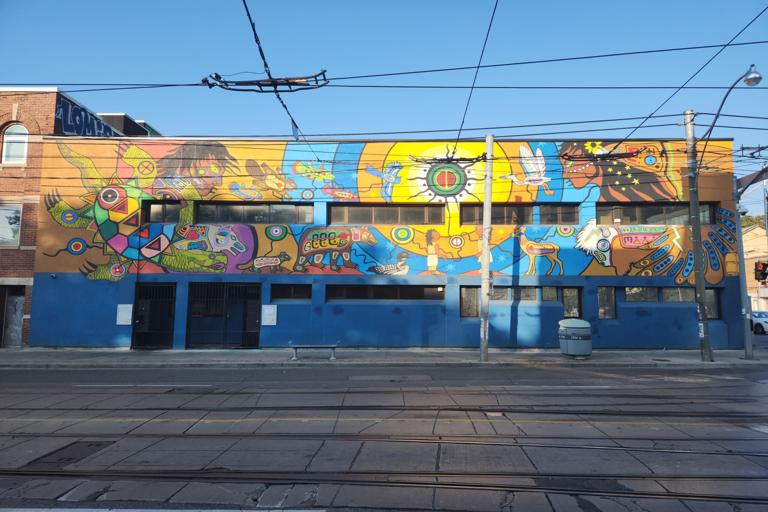People & Impact
Indigenous Artist’s Mural Series Honors Residential School Survivors
A new public art project in downtown Toronto brings awareness and healing through bold visual storytelling.

A vibrant mural on the side of a downtown Toronto community center is stopping pedestrians in their tracks—not just for its colors, but for the story it tells. Created by Indigenous artist Natalie Peltier of the Anishinaabe Nation, the piece is part of a growing series dedicated to residential school survivors and their descendants.
Titled “Voices That Echo,” the mural depicts a circle of children holding hands under a tree, surrounded by symbols of strength and memory: feathers, drums, and orange flowers. Peltier said the tree represents life and resilience. 'These children may have been silenced, but their spirits endure,' she explained.
The project was commissioned by the City of Toronto’s Indigenous Arts Initiative, which aims to amplify Indigenous stories through public art. Peltier’s work was chosen for its emotional depth and educational value. 'This isn’t just art—it’s truth-telling in the open air,' said project coordinator Shawna Whitefeather.
The mural’s location was intentionally selected—close to a school, a transit line, and a library. 'We want as many people as possible to see it, reflect on it, and ask questions,' said Whitefeather. Passersby have left notes and flowers at the site since its unveiling last month.
Peltier worked with local elders and survivors during the design process. Their input shaped everything from color choices to the positioning of traditional symbols. 'Every line in this piece has meaning,' she said. 'This wasn’t done in isolation—it was a community creation.'
Workshops have accompanied the mural’s launch, giving students and residents a chance to engage with the themes in a deeper way. Topics range from the history of residential schools to the importance of Indigenous languages and ceremonies in cultural healing.
The response has been profound. Educators have brought classes to view the mural as part of their curriculum, and several school boards have requested similar artworks in their districts. Peltier is currently consulting on additional installations in Thunder Bay and Sudbury.
Despite the heavy subject matter, the mural radiates hope. 'I wanted this to be a celebration of survival, not just a remembrance of pain,' said Peltier. Bright oranges and deep blues dominate the composition, creating a sense of movement and continuity.
City officials have stated that the mural will remain a permanent installation, with plans to protect it from weather and vandalism. It will also be digitally archived as part of the National Centre for Truth and Reconciliation’s new public art registry.
As Peltier stood before her completed work, she reflected on its purpose. 'Art is our language too,' she said. 'And with every brushstroke, we reclaim our place—not just in galleries, but in the streets, in the stories, in the future.'